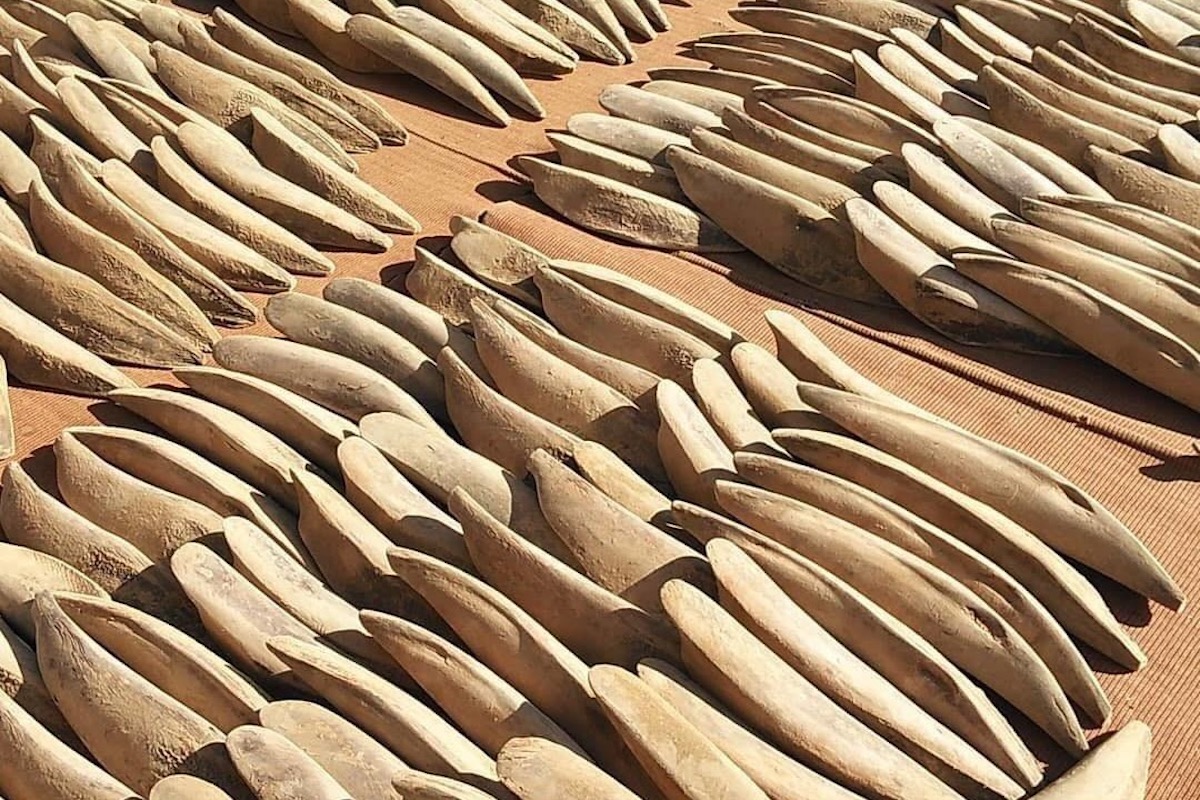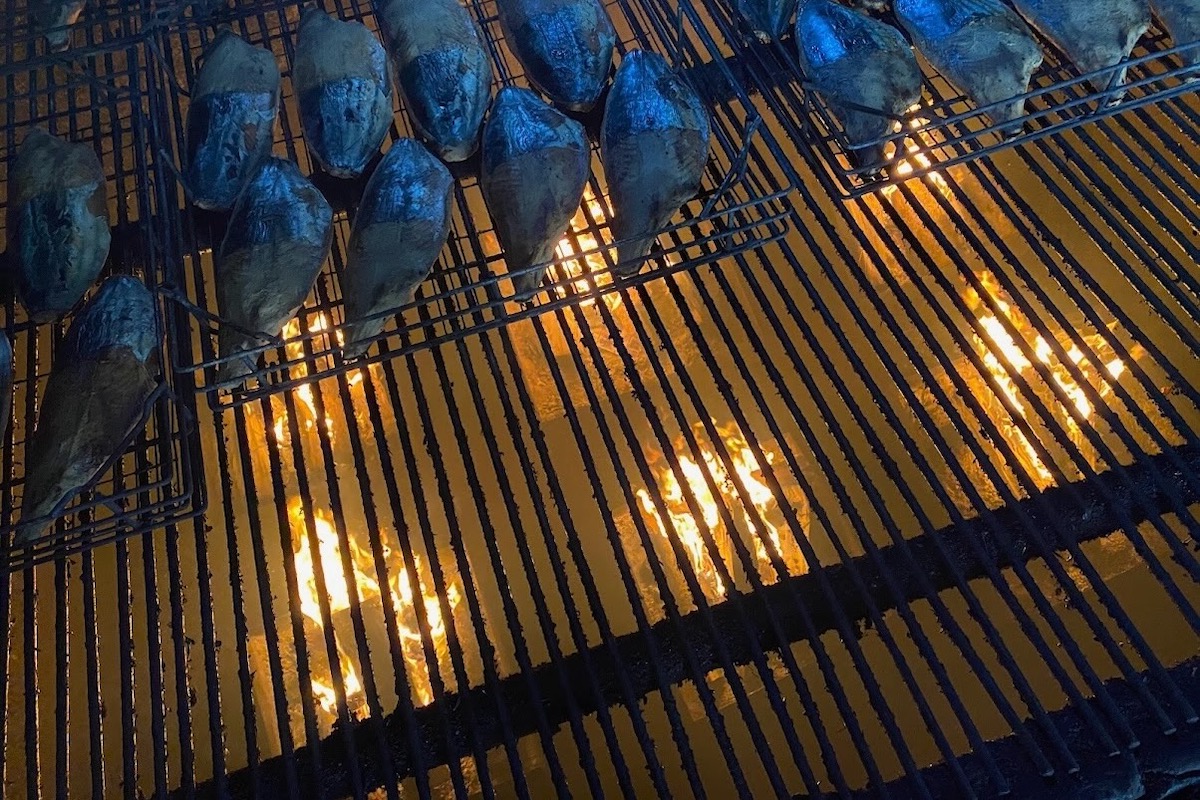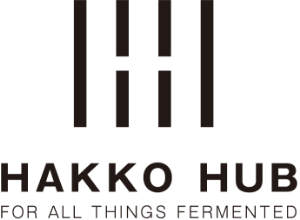My Story of Becoming a Bonito Flakes Seller
Last October, American food professionals visited fermented food producers to deepen their knowledge of Japanese fermentation culture during the “Hakko Tourism in Japan” tour campaign. As part of the tour, organizers held a tasting session where guests gave candid advice from the perspective of the American market to food product manufacturers looking to enter the United States market.
Nice to meet you. I am Maiko Otsuka of Taiko, a bonito flake wholesaler. In this series, I am going to introduce the four major topics of bonito flakes, dashi, cooking and food, as well as other things.
Before diving in, let me talk about my background and how I became a seller of bonito flakes. As a woman with no blood relations to the business, how did I get thrust into a male-dominated world which is still strongly influenced by family succession? And what am I doing today?
1. The beginning
When I was 18 years old, I moved from my hometown in Kyushu to Tokyo in order to attend a vocational school, and after graduation I worked at a veterinary hospital as both a nurse and a trimmer. At the time, I thought that being a nurse was my calling, and I felt so fulfilled and satisfied with my job that even those around me told me so.
However, in my fifth year, something happened that made me realize the limitations of working as a nurse. It also made me recall the relationship that exists between illness and food. This led me to decide to become a chef.
My first job as a chef was at a traditional Japanese kappo restaurant. It was a small establishment, with one master and one other person senior to me. This is supposedly where I learned the basics of cooking. But what shocked me was the fact that this establishment rarely used dashi made from scratch and instead used ready-made bonito-seasoning for most of its dishes. Since I had not gone to culinary school, I felt a strong sense of urgency to study on my own.
However, no matter how many times I tried on my own, I could never make dashi with a taste that I could be satisfied with. When I asked the master and the other senior staff, they said they didn’t know, and when I went to Tsukiji and asked people there, they also couldn’t give me a satisfactory answer. Everything written in books was also similar. Through trial and error, I would succeed on rare occasions, but then I could not reproduce the same taste because I did not know why I had succeeded.
As I became fixated with dashi making, one day I saw a notice for a dashi-making class. I was drawn in and ended up signing up. It was in that class that I met Inaba (now President of our company) who was working for Taiko at the time.

This was my first year after I became a chef. I never dreamed that the dashi I tasted in that class would change my life.
What I learned from Inaba at the dashi-making class cleared up questions that had been building up in my mind.
- Difference in Taste
- Reasons for Acidity
- The Relationship Between Color and Taste, etc…
These concepts were not explained in books, nor understood by chefs or by bonito flake sellers. Why was that? I asked the chefs and bonito flake sellers and the answer I got from them surprised me.
“No chef is doing this and no bonito seller thinks about this when they are selling.”
Through those conversations, I first learned of bonito flake connoisseurs. In short, Bonito flake connoisseurs can almost always tell the taste and quality just by looking. I also learned that Inaba was probably the only active connoisseur in Japan (even at that time). Some time after that, I moved to a new establishment, and when I realized again how great Taiko’s bonito flakes were. I wanted to learn more from Inaba about bonito flakes, so I volunteered to help out at the dashi-making class.
2. Why I decided to become a bonito flake seller


As I helped out, I came to empathize strongly with Inaba’s passion for bonito flakes and how he respected the producers. He said, “If I work diligently and my work is properly evaluated and that makes everyone smile, then that makes me very happy, and that’s what I want to do.” I was so happy to find out that there were other people who thought this way and even more when I found people (i.e., Inaba) who were actually putting this into action.
At the same time, the question of succession came to mind. Who would be able to evaluate the work of the producers when Inaba is gone? Bonito flakes that can produce this flavor will disappear with him. Connoisseurs will cease to exist.
Even after years of friendship with Inaba and having thought about the issue of succession many times, it always felt to me like it was not my own problem but someone else’s. I always thought that the issue would resolve itself. But I did not realize yet how unique Inaba was.
Inaba’s ideas were often dismissed as idealistic, especially in the modern day where fewer and fewer people bothered to make dashi from bonito flakes in the first place. I have also heard that not many people want to be a seller of bonito flakes, unless it is a family business. I finally realized that the chances of finding someone new who would carry on the torch was extremely low.
Added to that was Inaba’s personality.
Since Inaba’s personality is a combination of that of an Edo native, an athlete with almost military-like discipline and a craftsman with temperament, it was sometimes difficult to find someone who can put up with him. One time, someone told me that “If a profession is truly needed in this world, it will eventually come back, even if it is temporarily lost. ” And there was a time when I had accepted this.
But in the end, this is was my thought process:
Can we really let this traditional craft die out in our generation? Is it really OK for us not to pass this on to our children’s generation? Will you be satisfied working for another manufacturer when you cannot make ends meet?
So that’s why I told Inaba: “I want to do it. [I want to become a bonito flake seller.]” It had been five years since we met.
3. Helping others do what they do best
The answer I received from Inaba was: “It’s not a job for a woman, don’t underestimate it.”
Looking back, I can see why he said that.
Regardless of how hot or how cold it is, if the weather is right, we dry the bonito filets. Once a week, we carry loads of materials (boxes containing products) received from production sites. Each box weighs 20 kg and they are stacked higher than your head. We select and finish them according to each of our customer’s needs. We also shave the filets, and there are many other daily operations. It is a job that requires physical strength and mental toughness.

So, I spent two years convincing him. “Please let me do it,” I said. Those two years were also a time in which I could question my own resolve and that I won’t be able to run away once I get accepted.
I am now in my third year working with Inaba. While helping Inaba with his connoisseur work, I look and feel as many filets as I can every day, recording them mentally. I go through an endless process where I see similar filets, I come to understand the differences, and sometimes I become even more confused. I repeat this process over and over. Every now and then, I have a moment when I realize that “I understand it now” and recognize my own personal growth.
Also, soon after I joined the company, I took on the sales representative role. On behalf of Inaba, who is not very good at explaining things in words, I spoke to customers and found out what they wanted, which I then passed on to Inaba. I was able to make full use of my knowledge and experience as a chef, and to combine it with the additional knowledge I had gained as a seller of bonito flakes, to offer suggestions to professional chefs considering the questions or challenges they faced such as: the differences in regional characteristics of dashi; use of bonito flakes to match the konbu used; methods of making dashi that harmonize with operations; and different ways of making dashi depending on differences in the water.
I can talk to chefs about what they are struggling with, what they may not understand. And because I have experienced many of these things myself, I can help them resolve these issues properly. I listen to our customers in order to solve their problems and connect them with the right products.
My role is to make sure that my customers can do what they do best by:
- Putting the art of connoisseurship to work
- Finding paths that Inaba was not able to find
- Making the most of the bonito flakes made by the producers
- Helping chefs display their skills
Finally…
The story of bonito flakes is actually not particularly unique. Many things about bonito flakes make sense when you are told, but you don’t realize until you are told. Because it is such a familiar food ingrained deeply in our lives and is as common as the air around us, we don’t pay special attention and therefore do not understand it well. I wanted to write about bonito flakes, which had become unfamiliar back into the fold.
In the past, bonito flakes were boiled and pressed. They did not smell even if they were left in the pot. Making dashi was not some time-consuming process only for the chefs, but rather it was something that was actually very easy, casual and tasty, left to the mother who was in charge of the daily cooking. We will be sharing our cuisine, dashi, and many other topics with you, focusing on the real bonito flakes, which even chefs don’t know and other bonito flake sellers have forgotten.

Maiko Otsuka is the Bonito Flake Coordinator and Director of Sales at Taiko in Tokyo. Maiko's expertise in bonito flakes ensures the finest quality products reach customers, while her innovative ideas inspire chefs worldwide.

